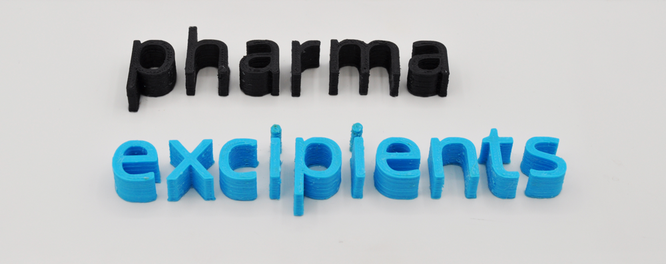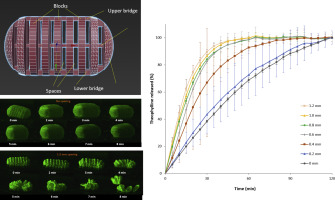- Home
- Blog
- News
- Basics
- Sources
- Agencies, Regulatory & Organisations
- CERSI Excipients Browser
- Excipient Report
- Excipient DMF List
- EXCiPACT Certified Companies
- Excipient Documentation
- Excipient EINECS Numbers
- Excipient E-Numbers
- FDA Inactive Ingredient List
- FDA GRAS Substances (SCOGS) Database
- IPEC Americas
- USP - U.S. Pharmacopeia
- Definitions
- Whitepapers / Publications
- Supplier
- Services
- Media
- Events
- 1st pharmaexcipients Poster Award
- Event Calendar
- Events featured by pharma-excipients
- 4th Annual Formulation & Drug Delivery Congress
- DDF Summit
- ExcipientFest Americas
- ExcipientFest Asia
- Global CompliancePanel
- International Conference and Exhibition on Pharmaceutics & Novel Drug Delivery Systems
- Formulation & Drug Delivery USA Congress
- Laboratory Medicine 2018
- Making Pharmaceuticals Europe
- Making Pharmaceuticals Exhibition
- Pharma Integrates
- PharmaExcipients China @CPhI China
- TTC Technology Training Center
- Jobs
- Online Sourcing
- Contact
06. August 2018
Hypothyroidism is a chronic and debilitating disease that is estimated to affect 3% of the general population. Clinical experience has highlighted the synergistic value of combining triiodothyronine (T3) and thyroxine (T4) for persistent or recurrent symptoms. However, thus far a platform that enables the simultaneous and independent dosing of more than one drug for oral administration has not been developed. Thermal inkjet (TIJ) printing is a potential solution to enable the dual deposition of...
07. June 2018
3D printing evolved as a promising technique to improve individualization of drug therapy. In particular, when printing sustained release solid dosage forms, as for instance implants, inserts, and also tablets, estimation of the drug release profile in vivo is necessary. In most cases, corresponding analyses cannot be performed at hospital or community pharmacies. Therefore, the present study aimed to develop a sustained release drug delivery system produced via 3D printing, which allows dose...
25. March 2018
Fused deposition modelling (FDM) 3D printing has shown the most immediate potential for on-demand dose personalisation to suit particular patient's needs. However, FDM 3D printing often involves employing a relatively large molecular weight thermoplastic polymer and results in extended release pattern. It is therefore essential to fast-track drug release from the 3D printed objects. This work employed an innovative design approach of tablets with unique built-in gaps (Gaplets) with the aim of...
24. February 2018
Enalapril is an off-patent angiotensin-converting enzyme inhibitor for which no paediatric age-appropriate formulation is commercially available in Europe, and enalapril maleate (EM) orodispersible minitablets (ODMTs) have previously been formulated within the LENA (labelling enalapril from neonates to adolescents) project. In this study, a dilution method has been developed by dispersing the lowest dose strength ODMTs to enable flexible and precise EM dosing during the dose titration phase of...
04. November 2016
The use of various types of printing technologies offer potential solutions for personalized medicine and tailored dosage forms to meet the needs of individual treatments of the future. Many types of scenario for printed dosage form exist and the concepts include, on the simplest level, accurately deposited doses of drug substances. In addition, computer design allows endless opportunities to create suitable geometries with tailored functionality and different levels of complexity to control...
25. July 2016
Abstract The feasibility of a colorimetric technique was investigated in CIELAB color space as an analytical quality control method for content uniformity of printed orodispersible pediatric delivery systems. Inkjet printing was utilized to fabricate orodispersibe film formulations containing propranolol hydrochloride in a colored ink base using three different edible substrates. A thin sweetener coating layer of saccharin was successfully included in the final dosage forms for palatability...
24. March 2016
The increasing demand for personalized medicine necessitates the production of easily customizable dosage forms. As the number of possible dosage forms may scale towards infinity, their uniqueness require a versatile production platform and numerical simulation in order to be manufactured efficiently. A mathematical description of these systems is the only feasible approach to manage such diverse properties of different products. However, experimental verification is still essential for...




